Discover Decouple
Decouple

Decouple
Author: Dr. Chris Keefer
Subscribed: 355Played: 24,992Subscribe
Share
© Dr. Chris Keefer
Description
There are technologies that decouple human well-being from its ecological impacts. There are politics that enable these technologies. Join me as I interview world experts to uncover hope in this time of planetary crisis.
306 Episodes
Reverse
In late October, amid the choreography of President Trump’s visit to Tokyo, two vast and curiously intertwined announcements were made: an $80 billion strategic partnership between the U.S. government and Westinghouse Electric Company, and a $550 billion investment framework between the United States and Japan.This episode of Decouple, hosted by AJ Camacho of Politico and E&E News, brought together Michael Seely, Yuri Humber and Chris Keefer this time in the guest seat to discuss the implications of this deal for the United States, Japan and Canada. Listen to Decouple on:• Spotify: https://open.spotify.com/show/6PNr3ml8nEQotWWavE9kQz• Apple Podcasts: https://podcasts.apple.com/us/podcast/decouple/id1516526694?uo=4• Overcast: https://overcast.fm/itunes1516526694/decouple• Pocket Casts: https://pca.st/ehbfrn44• RSS: https://anchor.fm/s/23775178/podcast/rssWebsite: https://www.decouple.media
In this episode of Decouple, Dr. Jeff Waksman, Principal Deputy Assistant Secretary of the Army for Installations, Energy and Environment, explains how the U.S. Army is making a second attempt at making microreactors great again. The discussion situates the Janus microreactor program in the long history of the Army Nuclear Power Program and Project Pele, highlighting why earlier small reactor deployments failed to compete with diesel and grid power even in extreme environments, and why Janus represents a fundamentally different approach.Janus is best understood as an attempt to apply the Commercial Orbital Transportation Services model to nuclear energy, using milestone-based funding, hard downselects, and vendor replaceability to subsidize learning rather than electricity sales. The conversation explores the severe economic constraints facing one to ten megawatt reactors, the limits of the SpaceX analogy, and the unglamorous but decisive challenges of fuel logistics, waste removal, and slow nuclear learning cycles that will ultimately determine whether microreactors can ever move beyond demonstration and into durable military let alone commercial service.Listen to Decouple on:• Spotify: https://open.spotify.com/show/6PNr3ml8nEQotWWavE9kQz• Apple Podcasts: https://podcasts.apple.com/us/podcast/decouple/id1516526694?uo=4• Overcast: https://overcast.fm/itunes1516526694/decouple• Pocket Casts: https://pca.st/ehbfrn44• RSS: https://anchor.fm/s/23775178/podcast/rssWebsite: https://www.decouple.media
The first U.S. nuclear renaissance collapsed under the weight of cheap shale gas, lost institutional expertise, and disastrous projects like Vogtle and Summer. Today, America is planning a fleet of eight AP1000 reactors, backed by unprecedented federal incentives. But can the country actually build large nuclear again?In this video, we break down what really killed the 2000s revival, why Fukushima wasn’t the turning point, and how AP1000 and ESBWR passive safety performed in station-blackout analyses. Most importantly, we explore why nuclear success depends not on reactor design, but on rebuilding the developer organizations needed to execute these megaprojects.If the United States can rebuild those institutions, a real nuclear comeback is possible. If not, history risks repeating itself.Listen to Decouple on:• Spotify: https://open.spotify.com/show/6PNr3ml8nEQotWWavE9kQz• Apple Podcasts: https://podcasts.apple.com/us/podcast/decouple/id1516526694?uo=4• Overcast: https://overcast.fm/itunes1516526694/decouple• Pocket Casts: https://pca.st/ehbfrn44• RSS: https://anchor.fm/s/23775178/podcast/rssWebsite: https://www.decouple.media
Saudi Arabia burns nearly one million barrels of oil per day to keep its lights on, yet it has cheaper and faster ways to replace this than by building large nuclear reactors. So why is the Kingdom pushing so hard for a civil nuclear deal? This episode walks through the strategic logic that has animated Riyadh’s nuclear ambitions for more than a decade. The answer lies in prestige, industrial capacity, and the latent fuel cycle capabilities that come with a power reactor programme, all set against the backdrop of regional tension with Iran.We look closely at the recent Washington announcement that United States Saudi 123 talks have been “concluded,” the unresolved fight over enrichment rights, and the geopolitical pressure being applied to South Korea to align its nuclear exports with American interests. From the legacy of the Quincy pact to the rivalry between Westinghouse and KEPCO, this conversation unpacks how a simple reactor tender has become one of the most consequential energy and security decisions in the Gulf.Listen to Decouple on:• Spotify: https://open.spotify.com/show/6PNr3ml8nEQotWWavE9kQz• Apple Podcasts: https://podcasts.apple.com/us/podcast/decouple/id1516526694?uo=4• Overcast: https://overcast.fm/itunes1516526694/decouple• Pocket Casts: https://pca.st/ehbfrn44• RSS: https://anchor.fm/s/23775178/podcast/rssWebsite: https://www.decouple.media
In this episode, Chris Keefer speaks with Hadron Energy founder Samuel Gibson, the twenty four year old entrepreneur pursuing a ten megawatt integral pressurized water microreactor through a one point two billion dollar business combination with GigCapital7. Gibson outlines why he believes light water is the fastest licensing path, how he assembled a veteran nuclear team, and why Hadron shifted from a one megawatt concept to a ten megawatt design built around LEU plus fuel, modular plant layouts, and air cooled decay heat removal. Keefer presses on the harder questions: whether factory fabrication can overcome the fixed civil works and regulatory burdens that have crippled previous SMR efforts like NuScale and mPower, what off the shelf really means in a hollowed out US supply chain, and how long refueling cycles, fuel qualification, and decommissioning challenges scale at microreactor size. The conversation becomes a broader test case for whether startup optimism can meaningfully confront the industrial, economic, and physics grounded constraints that define real world nuclear deployment.Listen to Decouple on:• Spotify: https://open.spotify.com/show/6PNr3ml8nEQotWWavE9kQz• Apple Podcasts: https://podcasts.apple.com/us/podcast/decouple/id1516526694?uo=4• Overcast: https://overcast.fm/itunes1516526694/decouple• Pocket Casts: https://pca.st/ehbfrn44• RSS: https://anchor.fm/s/23775178/podcast/rss
This week on Decouple, I sit down with Aleksey Rezvoi, a veteran maritime nuclear engineer who began his career in the Soviet Union designing third- and fourth-generation submarine and icebreaker reactors before later working in the U.S. nuclear sector.We explore the hidden history and living reality of Russia’s civilian nuclear fleet—a line that began with the icebreaker Lenin in 1959 and continues today with the RITM-200, the world’s only serially produced small modular reactor.From Arctic logistics and reactor design philosophy to advanced fuels and industrial ecosystems, Rezvoi offers a rare insider’s view of what the West misses when it talks about “maritime nuclear.”
This week I sit back down with François Morin in his third appearance on the show. François is the World Nuclear Association’s point person on China. He works and travels inside China, speaks fluent Mandarin, and spends time at the conventional and advanced reactor sites that the rest of us argue about on Twitter. We cover how quickly China is really building nuclear power compared to the heyday of the French Mesmer plan, how that compares to Chinese coal and gas deployment, why Chinese nuclear is still mostly coastal, and the use case, build times and performance of the so-called “advanced reactors” that China is operating while Western startups are still in the powerpoint phase pitching to investors.Watch the full conversation on YouTube.Listen to Decouple on:• Spotify: https://open.spotify.com/show/6PNr3ml8nEQotWWavE9kQz • Apple Podcasts: https://podcasts.apple.com/us/podcast/decouple/id1516526694?uo=4 • Overcast: https://overcast.fm/itunes1516526694/decouple • Pocket Casts: https://pca.st/ehbfrn44 • RSS: https://anchor.fm/s/23775178/podcast/rss Website: https://www.decouple.media
This week on Decouple, I sit down with Dan Wang, a research fellow at Stanford’s Hoover History Lab and author of "Breakneck: China’s Quest to Engineer the Future." We trace how China became an “engineering state” while America turned into a “lawyerly society,” and what that means for infrastructure, energy, industry, birthrates, social security, and human lives. From Guizhou’s skyways to Jane Jacobs’ shadow over North American cities, Wang shows the upside of abundant state capacity and the dark side of excessive control.Buy Breakneck: https://danwang.co/breakneck/
This week, we zoom out to the broader intellectual themes that shaped Decouple’s origins five years ago. I’m joined by Jesse Ausubel, a visionary in sustainability and biodiversity research and the Director of the Program for the Human Environment at The Rockefeller University in New York City. In his long career, Ausubel pioneered the modern study of decarbonization and dematerialization in the late 1980s and early 1990s. He helped organize the first UN World Climate Conference in 1979 and spent the 1980s at the National Academies formulating U.S. and global climate research programs. In parallel, he has led major biodiversity initiatives including the decade-long Census of Marine Life, the DNA Barcode of Life project, and continues surveying ocean biodiversity using environmental DNA.In this conversation, Ausubel shows how the simple framework of logistic S-curves can illuminate fundamental trends across complex systems, including energy systems. Through this lens, we discuss the “environmental trifecta” of land-sparing, decarbonization, and dematerialization, and we explore whether apparent counter-trends challenge Ausubel’s framework. Suffusing the interview is Ausubel’s belief in the wisdom of long-term thinking and objectivity: simple, insightful frameworks are a starting point for admitting much-needed complexity into our worldviews. Join us in this rare examination of the mental models that claim to predict our environmental future.
Process heat accounts for two-thirds of industrial emissions. Yet talk of decarbonization often misses the engineering realities that separate viable solutions from expensive dead ends. To understand process heat and the technologies capable of providing it, I’m joined by returning guest Jesse Huebsch, a process engineer specializing in chemical plants. Our conversation ranges from steel and cement to plastics and ammonia, examining which processes can be electrified, where steam dominates, and why the most advanced high-temperature reactor designs may not be the answer.
Nuclear has entered its meme stock moment. Last week, Oklo hit a market capitalization of $20.7 billion—more than established nuclear giants BWXT, Curtiss-Wright, and AtkinsRéalis—despite having zero revenue, no NRC design certification, and a rejected license application. In my conversation with returning guest Michael Seely, aka AtomicBlender, we examine this preposterous valuation built on glossy renderings rather than demonstrated readiness. If Rosatom, with 70 years of R&D and thousands of specialized engineers, struggles to make sodium fast reactors commercially viable, how will a Silicon Valley startup accomplish it in two years? When this bubble bursts, the entire nuclear renaissance may pay the price.
This week, award-winning science writer Peter Brannen returns to Decouple to explore the 4.5 billion-year story of carbon dioxide on Earth. Grounding our discussion is his new book, The Story of CO2 Is The Story of Everything. From the alien world of the Hadean eon to humanity's emergence as the "pyromaniac ape," Brannen reveals how this trace gas has shaped every aspect of our planet's evolution, through Snowball Earth, mass extinctions, and the rise of complex life, culminating in humanity's unprecedented ability to burn fossil fuels.We talk about:The origin of life and early carbon chemistryWhy Earth needed fossil fuels to create an oxygen-rich atmosphereThe Great Unconformity and Snowball Earth's role in building the rock record The Carboniferous period as the age of giant insects and coal formationThe Permian mass extinction and Siberian Traps volcanismThe Paleocene-Eocene Thermal Maximum as a climate analogThe ice age world that shaped human evolution and the rise of agricultureHow megafauna extinctions marked the beginning of human planetary impact
Professor Alex Wellerstein returns from the set of WIRED (watch his excellent appearance here) to help me understand the origins of Middle Eastern nuclear programs and where they stand today. From France’s covert assistance to Israel’s bomb program in the 1960s to the mysterious Vela incident over the South Atlantic, Wellerstein shows how nuclear weapons spread through unofficial networks of scientists, spies, and opportunistic allies. We explore Iran’s strategic nuclear hedging, Israel’s policy of deliberate ambiguity, and the disturbing possibility that recent attacks on Iran’s uranium enrichment facilities may force the country’s hand toward weaponization.
This week, we talk about rare earth metals. What are they, where do they come from, and how are they redefining global power? I’m joined by David Abraham, a natural resource strategist who saw the future of rare earths in 2010 while working in Japan's Ministry of Economy, Trade and Industry. When China cut off rare earth exports over a territorial dispute, Abraham realized these obscure elements, sprinkled into our steel, the magnets in our speakers, the phosphors in our screens, held more geopolitical power than oil ever could. The warnings in his book, “The Elements of Power,” now written 10 years ago, feel like reading a prophecy. Half the periodic table now flows through your iPhone, and China controls 90% of the world's refining capacity for these critical materials. As trade wars escalate and great power competition returns, the country that controls rare earths may control the Earth itself.
This week, we talk about the rise of the global battery industry: its history, key players, raw material struggles, and how China came to dominate it. To do so, I’m joined by Henry Sanderson, author of "Volt Rush: The Winners and Losers in the Race to Go Green." We trace the story of electrification from Volta’s early experiments to the supply chains that now shape global power. Sanderson brings decades of reporting to a narrative that reveals China’s industrial strategy, the entrepreneurs behind battery giants, and the troubling realities of mining cobalt, nickel, and lithium. Together, we examine how technology, geopolitics, massive wealth, and environmental trade-offs define the future of clean energy.
This week, we talk about Russian nuclear exports. Michael Seely, host of AtomicBlender, joins me to discuss the rise of Rosatom: Russia’s nuclear energy behemoth that now builds nearly half of the world’s new reactors. We trace its formation after the Soviet collapse, its grip on the nuclear fuel market, and its unmatched “turnkey” model for newcomer nations. Rosatom’s nuclear exports are more than just a commercial endeavour—they can reshape global influence for decades.Michael's videos on Canada, Russia, and Ukraine.
This week, we travel to the edge of the map with Aleksandr Surtcev, an engineer who has crewed Russian nuclear icebreakers along the Northern Sea Route. We explore how Russia’s Arctic fleet keeps this strategic corridor open, why floating nuclear plants are powering remote communities and mines, and what life looks like in a place where polar bears trail ships for fish and resupply markets pop up on the ice. Beneath the stories lies a deeper discussion of geopolitics, engineering, and the hard logistics of operating in one of the most unforgiving regions on Earth.
This week, Mark Nelson joins us to deliver his second annual “State of the Atom” address. The nuclear power landscape has transformed in the last two years. Russia continues its nuclear export dominance while the West at last awakens from its stupor, driven by an unexpected force: artificial intelligence's insatiable appetite for baseload power. From Amazon's billion-dollar Susquehanna deal to Three Mile Island's resurrection, Big Tech is discovering what nuclear advocates have long known: that when you need reliable electricity around the clock, few other generation sources compare. Nelson maps the new nuclear battlefield where Chinese reactors scale up to 1,700 megawatts, European phase-outs crumble, and Western teams scramble to assemble the talent and capital needed to compete.Read more on Substack.
This week, we talk solar power—a long overdue topic on Decouple. In the past, guests have often been critical of the value of renewables on grids without extensive storage, and of the quality of jobs that politicians often claim when justifying renewables programs. Today, however, we drop preconceptions and get to the nuts and bolts. My guest is Seaver Wang, director of the Climate and Energy Research Program at The Breakthrough Institute. Despite is imperfections, the solar power has a remarkable story, from its technological origins, to its dramatic cost reductions in the last decade, to the sheer scale of new capacity being added in places like China. We cover these topics and more in this episode: the Solar Masterclass.Watch now on YouTube.We talk aboutHistorical roots and evolution of solar technologyImpact of the German Energiewende and feed-in tariffsChina's rise to dominance in solar manufacturingEnergy-intensive production processes of polysiliconControversy over Uyghur forced labor in XinjiangSolar’s lifecycle emissions and environmental impactsDramatic cost reductions and economies of scaleLimitations and misconceptions in distributed solarFuture integration with battery storageRole of geopolitical and ethical issues in solar supply chains
We have an unusual episode today. One, because of its length (1 hour 40 minutes), and two, because I’m the guest. Joined by Aidan Morrison as acting host, I talk about a topic of intense interest to me: the Darlington SMR project in Ontario, Canada. I’ve been critical of this SMR project, which recently received its final investment decision, by calling for a pivot to CANDU reactors at the site.I use this episode to break down all my reasons for being critical, and to concede ground to this bold SMR project where earned. This is not the first place I’ve shared my reasoning (media interview here, LinkedIn post there), but it is the most in-depth.If you have time to listen to the full thing, I promise you will leave quite knowledgeable about the ambitious and capable Ontario nuclear sector, which I’ve studied and engaged with for years.Prompting this episode was the OPG’s final investment decision on the SMR and the revelation of its eye-watering cost estimates. I break down the $4.5 billion price tag for the first unit, the expected learning that will take place, and share why this represents not just a technical and economic challenge, but a strategic mistake that could undermine Canada’s competitive advantage in nuclear power. From the massive excavation challenges of burying a reactor ten stories underground to the national security risks of abandoning proven CANDU technology for American designs, I hope to share some of the hard truths behind the SMR hype.Read extended shownotes on Substack.Watch now on YouTube.







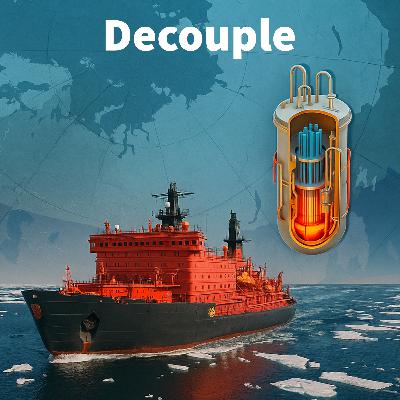
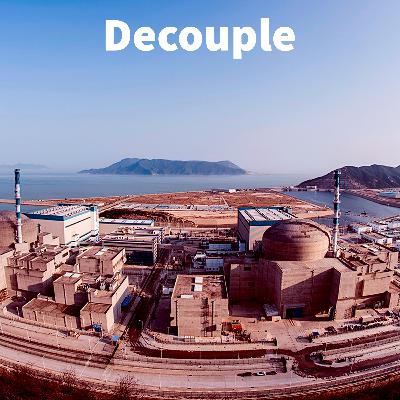

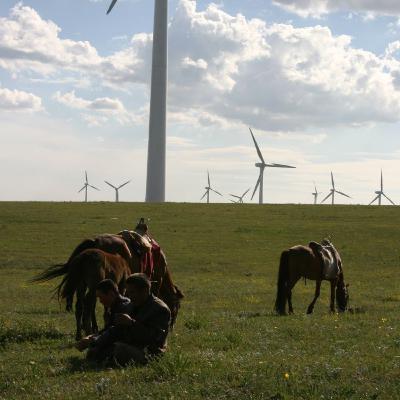
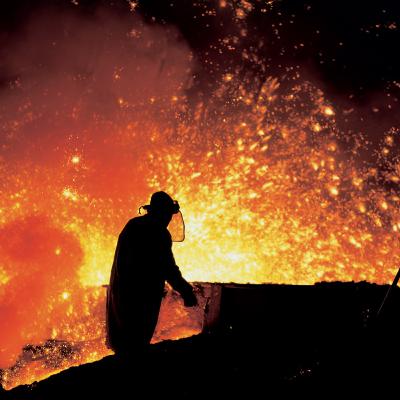

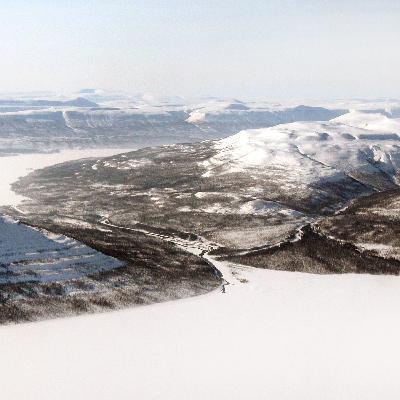

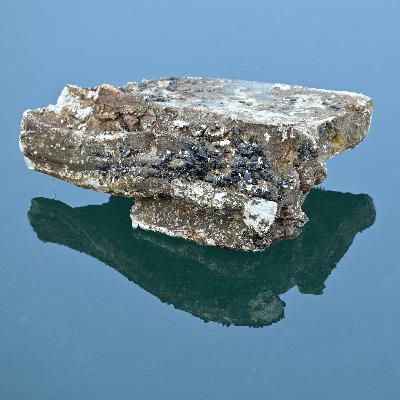
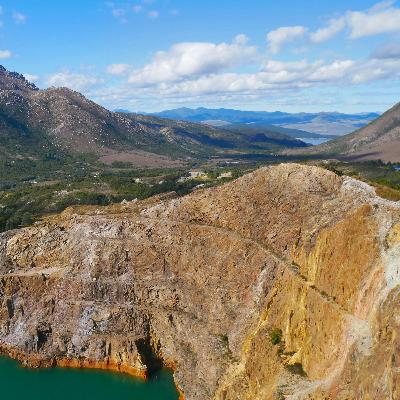
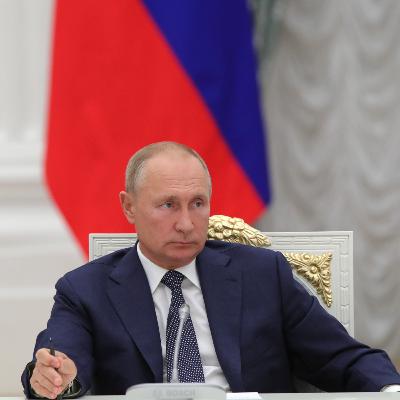
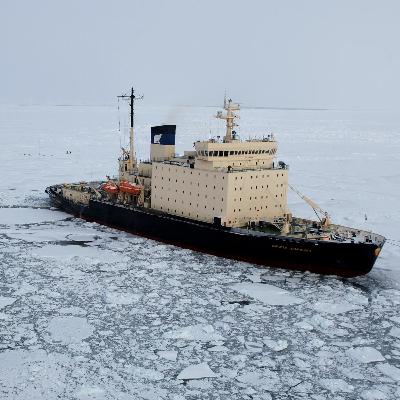

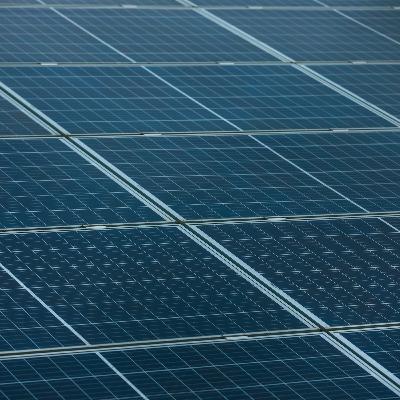
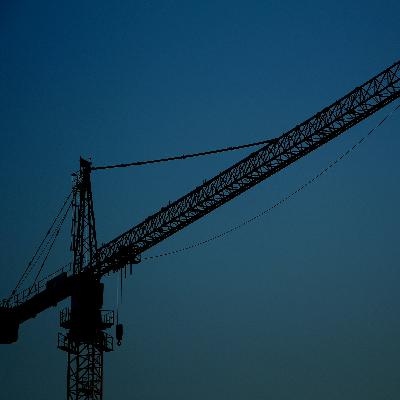



i love this guy
Very good cast even if combative I think there's a ton of good and bad signals to draw from this. A ton of the commentary from Jigar seems like a defense of previous policy and US primacy instead of well thought out policy or an honest assessment of things but the fact that he seems to want to at least seem pro-nuclear suggests a substantial shift in attitudes in the US. I do look forward to seeing it posted on YouTube though as that's a better place for discussion.
Another fantastic episode.
You are both inspiring. Thank you! And greetings from Slovenia.
Good podcast, would be so much better if the host learned not to say "Umm" all the time
Investor in Nebraska ? Warren Buffett 😂
Bwahaha Mr. Hausfather talks about others cherry picking information all the while speaking only of Trump burning coal and not that fact that China is building more coal fire plants as well as Germany having to put their coal fire plants back into service because they're shutting down their nuclear power and wind and solar is a pipe dream. He constantly blames Trump as if Trump is the sole reason for global warming and is NEVER challenged by the host. Kinda disappointing really...